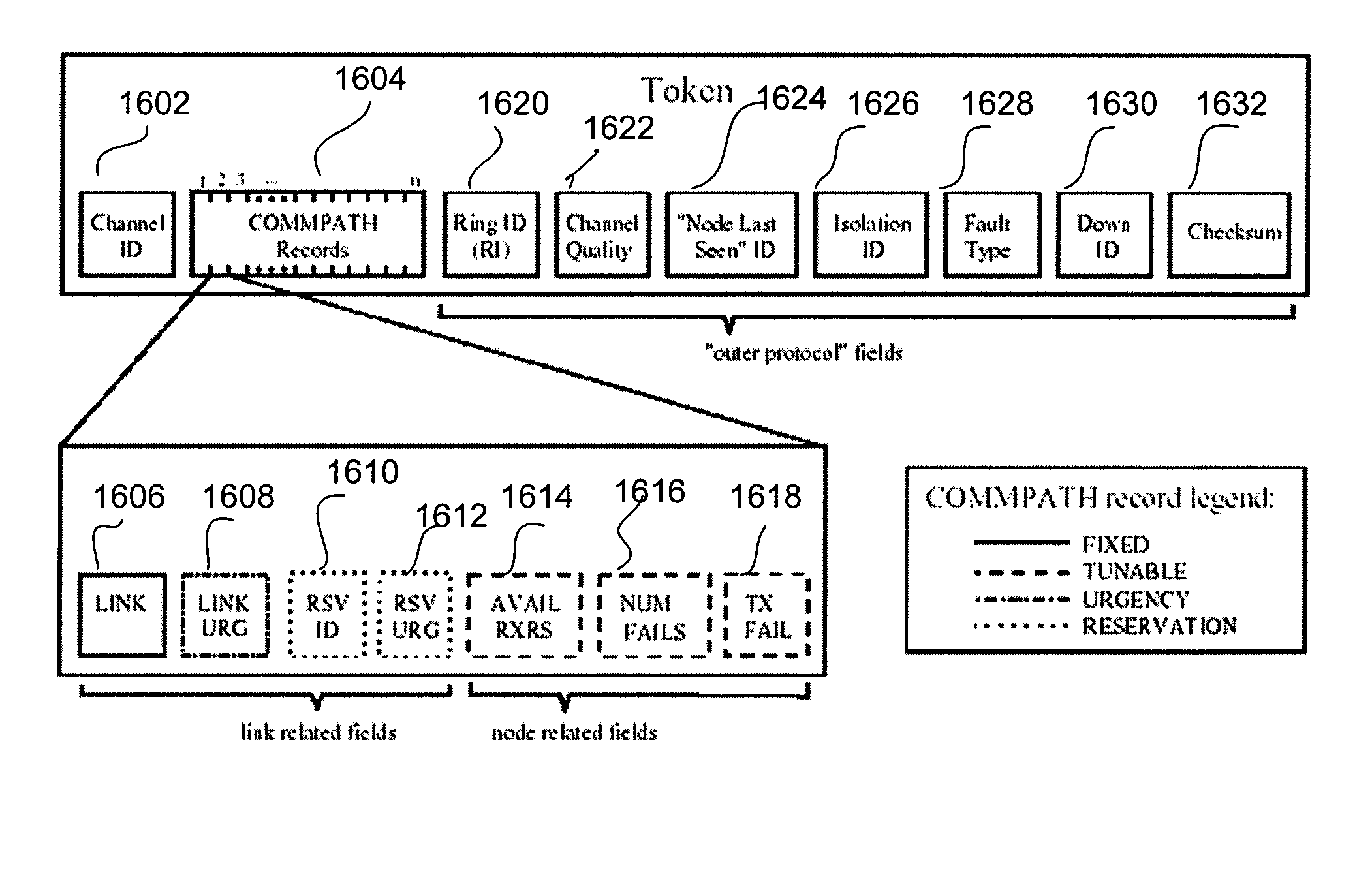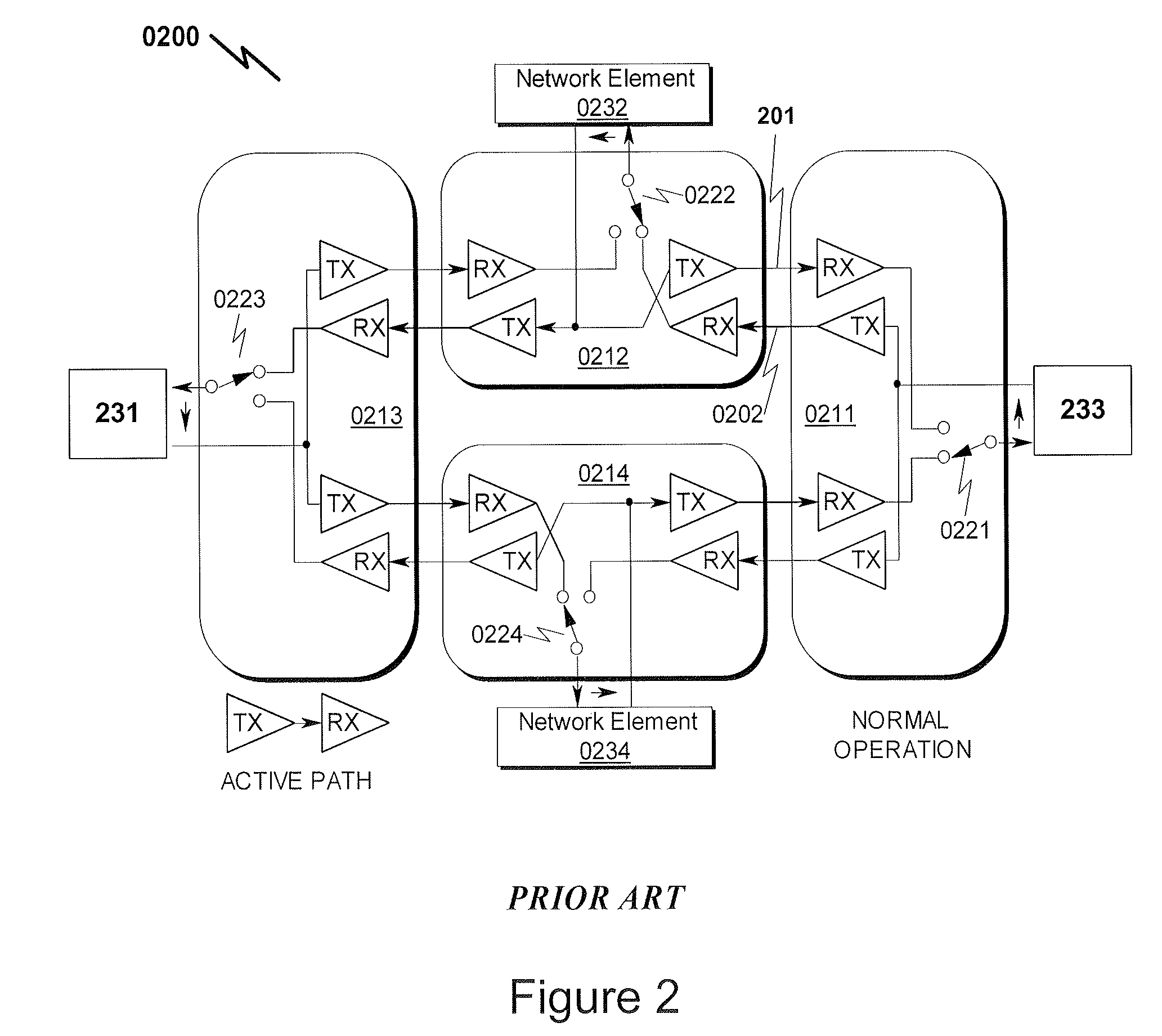Method of adapting an optical network to provide lightpaths to dynamically assigned higher priority traffic
a technology of optical network and lightpath, applied in the field of data transmission, can solve the problems of not being economically feasible to deploy large numbers of such pairs on a sometimes sparsely trafficked network, the cost of optical transmitter-receiver pair systems, etc., and achieve network data transparency, reduce delay and expense, and great efficiencies
- Summary
- Abstract
- Description
- Claims
- Application Information
AI Technical Summary
Benefits of technology
Problems solved by technology
Method used
Image
Examples
Embodiment Construction
[0110]The present innovations are described with reference to a “Reference Network,” described in another patent application Ser. No. 10 / 118,084, which is hereby incorporated by reference. The Reference Network is summarized below.
[0111]Since the inventions described in this document are intimately related to those presented in the Reference Network disclosure, some discussion of this relationship is in order as a preface. Please note that the Reference Network “token” is redefined (and / or differing fields are used / unused) for many of the schemes here, but the underlying token enhancement (referred to here as the LINK fields of the COMMPATH records, and referred to in the Reference network document as the “Active” fields, and detailed in the Reference Network disclosure) and logical ring architecture appear in all as fundamental ideas and constructions, so these other schemes represent extensions and / or adaptations of that technology. Furthermore, the survivability enhancements embo...
PUM
 Login to View More
Login to View More Abstract
Description
Claims
Application Information
 Login to View More
Login to View More - R&D
- Intellectual Property
- Life Sciences
- Materials
- Tech Scout
- Unparalleled Data Quality
- Higher Quality Content
- 60% Fewer Hallucinations
Browse by: Latest US Patents, China's latest patents, Technical Efficacy Thesaurus, Application Domain, Technology Topic, Popular Technical Reports.
© 2025 PatSnap. All rights reserved.Legal|Privacy policy|Modern Slavery Act Transparency Statement|Sitemap|About US| Contact US: help@patsnap.com



